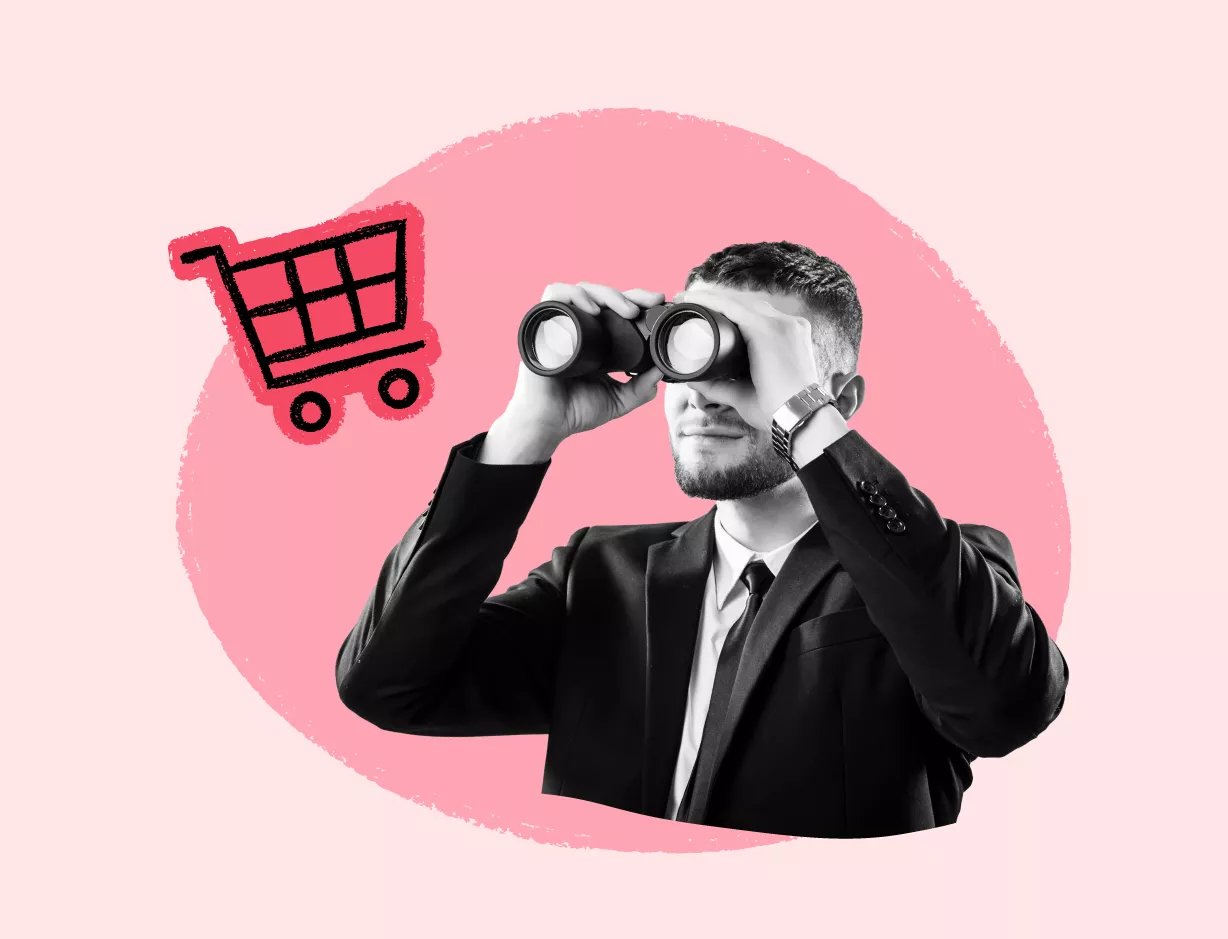
What Does “Out for Delivery” Mean & How Long It Takes?
What does in transit mean and how long does it take? Read this article to find out & see how to answer your customers’ burning questions.
Shipping, Tracking & Notifications
Boost customer experience and reduce support tickets
Realtime order and shipment tracking
Proactive order and shipping notifications
AI-Enhanced Discounted Labels
Predictive pre-purchase estimated delivery dates
Self-Serivce branded order tracking
Effortless experience delivered
Identify and Resolve Order Issues
Realtime order and shipment tracking
Make returns profitable and delight customers
Flexibility to define any return destinations & conditions
Simplify returns for your customers and team
Incentivize exchanges over returns
Returns management made easy for your team
Returns management made easy for your team
Easy claims and smart upsells
Understand why your customers are returning
In-Store & Curbside Pickup
Unify the online and the in-store experience
Hassle-free pickup experience for customers
In-Store dashboard to keep operations streamlined
In-Store and Online orders unified
Drive foot-traffic to your stores
Shipping, Tracking & Notifications
Boost customer experience and reduce support tickets
Realtime order and shipment tracking
Proactive order and shipping notifications
AI-Enhanced Discounted Labels
Predictive pre-purchase estimated delivery dates
Self-Serivce branded order tracking
Effortless experience delivered
Identify and Resolve Order Issues
Realtime order and shipment tracking
Make returns profitable and delight customers
Flexibility to define any return destinations & conditions
Simplify returns for your customers and team
Incentivize exchanges over returns
Returns management made easy for your team
Returns management made easy for your team
Understand why your customers are returning
In-Store & Curbside Pickup
Unify the online and the in-store experience
Hassle-free pickup experience for customers
In-Store Dashboard to keep operations streamlined
In-Store and Online orders unified
Drive foot-traffic to your stores
Boost customer experience and reduce support tickets
Realtime order and shipment tracking
Proactive order and shipping notifications
AI-Enhanced Discounted Labels
Predictive pre-purchase estimated delivery dates
Self-Serivce branded order tracking
Effortless experience delivered
Make returns profitable and delight customers
Flexibility to define any return destinations & conditions
Simplify returns for your customers and team
Incentivize exchanges over returns
Returns management made easy for your team
Equip your team for precise return checks.
Easy claims and smart upsells
Understand why your customers are returning
Unify the online and the in-store experience
Hassle-free pickup experience for customers
In-Store Dashboard to keep operations streamlined
In-Store and Online orders unified
Drive foot-traffic to your stores
Find the answer to all your questions
Take a step by step trip through our functionality to see how we can improve your ecommerce processes.
Explore the most comon questions about WeSupply
Calculate the ROI that WeSupply can bring you
Read actionable articles on how to optimize your post-purchase experience and decrease support tickets
Get inspired by stories of how our customers implemented an effortless post-purchase experience
Wondering if WeSupply is a good fit for you? Read through our use cases to see how we can help you increase conversion & improve CX!
A Deep Dive into Top Companies' Order Tracking & Returns Strategy
Find the answer to all your questions
Explore the most comon questions about WeSupply
Calculate the ROI that WeSupply can bring you
Request a no strings attached review of your current shopping experience and missed conversion opportunities
Take a step by step trip through our functionality to see how we can improve your ecommerce processes.
Read actionable articles on how to optimize your post-purchase experience and decrease support tickets
Get inspired by stories of how our customers implemented an effortless post-purchase experience
A Deep Dive into Top Companies' Order Tracking & Returns Strategy
Wondering if WeSupply is a good fit for you? Read through our use cases to see how we can help you increase conversion & improve CX!
How to forecast demand, consumer behavior, and shopping trends? Find out all about it here: from seasonality to supplier lead time, and more!

Demand forecasting refers to the process of predicting customer demand over a specific period using historical data and other analytical information to get highly accurate estimates.
In business and economics, forecasting demand is a critical task that can often mean the difference between success and failure.
Demand forecasting research methods are generally based on predictive analytics of historical data and can be divided into two main categories— qualitative and quantitative.
Qualitative methods are based on expert opinion and information gathered from the field, while quantitative methods use existing sets of data and analytical tools to make predictions. In general, qualitative methods are best used when there is minimal data available, while quantitative methods are more accurate but require more data to be effective.
Ultimately, the best forecasting approach is one that takes into account both qualitative and quantitative information. By using a mix of both approaches, businesses can develop a more complete picture of future demand and make better decisions about how to meet that demand.
Getting started in retail and eCommerce can be challenging.
It takes precious time, money, and dedicated staff members who are working toward the same goal(s).
So why should you invest in demand forecasting, especially when working with limited resources?
Fortunately, not only does demand forecasting predict future sales, but it’ll also enable you to:
Make data-driven, cost-efficient supply decisions
Estimate revenue and profit over a certain period
Optimize inventory to reduce warehousing costs
Accurately price your products and services
Discover new market potential
Build long-term business growth strategies
Forecasting demand is an essential part of effective business planning, and businesses should select the forecasting method that best suits their needs.
Businesses use demand forecasting to make decisions about production, inventory, staffing, and other aspects of their operations.
There are several different methods that can be used to forecast demand, and each method has its own advantages and disadvantages.
The best approach for a particular business will depend on factors such as the type of product or service being offered and the nature of the market.
There are several methods and types of demand forecasting, including:
Qualitative demand forecasting is a method of making predictions about a company’s consumer demand by looking at existing industry data, focusing particularly on expert opinion and relevant information collected from a certain field.
Quantitative demand forecasting heavily relies on huge volumes of existing data (i.e., numerical values) in order to calculate possible outcomes and predict consumer demand. However, this method requires large samples of data for accuracy, which can often be difficult to interpret.
The passive demand type relies on historical sales data in order to accurately predict future sales, and works best for companies that have significant past sales data points readily available.
Active demand forecasting is based on market research, business climate & competitor analysis, and business expansion and growth plans, making it great for startups and companies looking for ways to quickly scale their operations.
The macro demand forecasting type focuses on widescale, general economic conditions and external factors that influence the evolution of commerce, and it is often easily accessible for most businesses.
Micro demand forecasting analyzes data points specific to a certain industry, product, business model, and/or customer segment. For instance, analyzing the market for sustainable drinking straws made out of glass and aimed at generation Z (born between the late 1990s and the 2010s) in New York, NY.
Internal demand forecasting looks at any operational needs that may have an impact on future sales, including the number of staff members necessary in order to efficiently deal with demand.
Short-term forecasting of demand occurs during a relatively short timeframe, typically a period of less than one year, and it’s particularly efficient for planning the production needs for specific events and holidays.
A long-term demand forecasting method enables businesses to identify consumer behavior patterns and plan for seasonality. This can help reduce out-of-stock and backorder situations and efficiently plan investment strategies.
The goal is to ensure that you have the right amount of product or service available to meet customer demand, without tying up too much capital in inventory. To forecast demand accurately, you should track a number of key metrics, including supplier lead time, sales cycles, inventory and stock levels, and past sales & marketing campaign results.
By regularly tracking these metrics, you’ll be able to identify trends and adjust your strategy accordingly. Establish a foolproof forecasting system to minimize the risk of stockouts and maximize profits.
Supplier lead time refers to the amount of time it takes between the instant an order is received by a supplier and the moment the order is shipped. A company that can reduce its supplier lead time will have a competitive advantage, as it will be able to get its products to market faster and remove the risk of backorders.

One key metric for forecasting demand is the average sales cycle, which measures how long it takes to turn a lead into a customer. Moreover, you need to also look at the repeat purchase rate, which measures the percentage of customers that have shopped more than once from one company. By calculating these metrics, businesses can get a better sense of how quickly they need to restock their shelves and how much inventory they need to keep on hand.
When it comes to demand planning, you need to monitor your current inventory and stock levels to see what’s “trending” and what products could use a boost. Besides market research, you need to look at your own to determine future sales and customer demand. These metrics will help you plan for inventory levels and stocking needs, allowing you to meet customer demand while avoiding excess inventory and associated costs.
Forecasting demand most often means looking at historical data to determine future customer demand. To do this, sales and marketing teams need to work together to monitor campaign performance and continually adjust their marketing messages and customer segmentation.
By understanding past results, teams can make more informed decisions about what messages resonate with customers and which campaigns are most likely to generate leads. In today’s competitive marketplace, proper demand forecasting is essential for any business that wants to stay ahead of the curve.
Forecasting demand is an essential part of supply chain management. By predicting how much of a product will be needed, businesses can avoid the cost and inconvenience of stockouts. Forecasting demand can also help businesses to take advantage of economies of scale, by ordering larger quantities of products when demand is high.
What can you do to predict supply chain demand?
Analyzing your current customer base and their behavior is a must for forecasting demand. In fact, looking at consumer behavior can help you identify trends and target specific segments of your audience.
Make sure you keep an eye on what is happening in the local market. Pay attention to what your customers are going through. You can use this information to further identify people who might want to buy what you’re selling, giving you access to plenty of opportunities.
“Catching someone’s attention and being heard amid this streaming torrent of information is the greatest challenge of contemporary marketing.” ― Adele Revella
The goal is to establish who is your target market and create your ideal buyer persona(s). If you want to take it to the next level, you can also establish your negative buyer persona so you won’t spend precious resources chasing consumers who are clearly not a fit for your brand. In the end, it’s all about conveying the right message to the right people at the right time.
Whether we’re talking about weather-related seasonal fluctuations or seasonality changes due to holidays and other shopping events, you need to keep track of your sales and consumer trends if you want to create a premium pre-sale and post-purchase customer experience.
Weather is often unpredictable and can highly influence what sells and what not (e.g., a rainy summer might mean more umbrella sales). Moreover, there are various events and holidays you might want to take into account when planning your inventory, including:
Summer sales
Mother’s Day
Father’s Day
Easter
Back To School sales
Halloween
Black Friday
The Holiday Season
A wise person once said that assumptions are the termites of relationships, and that’s particularly true when it comes to customer relationships.
It’s crucial to listen to your customers and monitor what’s being put out there about your brand. Looking at user-generated content (e.g., reviews, social media posts) you can learn so much about future demand. Are they loving one of your products? Are they not fully satisfied with another item? Do you need to stock up on a certain product? No more guessing what your shoppers want from you— listen to your audience to answer demand-related questions!
There are a number of factors to consider when predicting demand in the eCommerce supply chain, as we’ve discussed in this article.
It’s key to have a clear understanding of your customer base and what they are likely to purchase— this can be done through research and analytics.
Additionally, you need to be aware of seasonal trends and fluctuations in the market to manage your inventory levels effectively.
By taking all of these factors into account, you can develop a demand forecast that will help you keep your eCommerce business running smoothly.
Most importantly, being proactive about shipping delays, out-of-stock situations and backorders is essential to ensure a positive customer experience. After all, customers are every company’s greatest asset.
Keep your customers in the loop by sending delivery notifications as soon as possible! And we’re here to lend you a helping hand— learn all about WeSupply Delivery Notifications and start your free 14-day trial!
See our platform in action & convince yourself!
Watch our demos below and see how we can help you take the post-purchase experience to the next level.
Learn How To Create Successful Post Purchase Email Campaigns
Build an effective post-purchase email flow that helps you increase customer satisfaction and drive revenue growth!

What does in transit mean and how long does it take? Read this article to find out & see how to answer your customers’ burning questions.

Porch pirates: their history, methods, and how you can prevent them from targeting your own customers.

Atmos found what they were looking for in WeSupply’s fully customizable tracking page. With our page Atmos goes beyond offering their customers valuable shipping and returns information.

Like most online retailers, Snipes is no exception. Jako’s
support team were constantly fielding “Where’s my order?” phone calls from
customers – sometimes the same day the item was purchased!
How EVEREVE improved the return experience for their customers. With over 93 boutiques and a rapidly increasing online presence, EVEREVE is well-known for creating a
Cabela’s UX & Post Purchase Experience Review The Perfect Product Page Template™ This free template will help you engineer the ultimate product page to increase